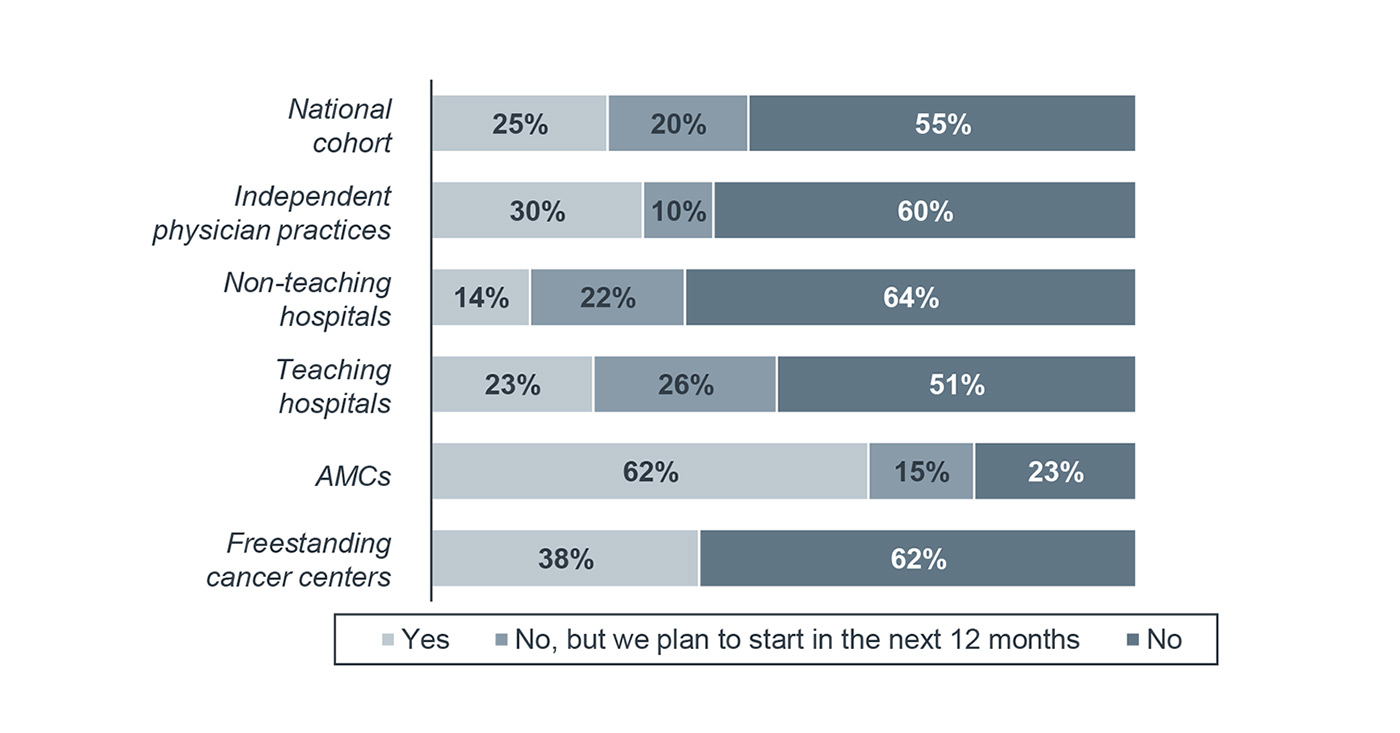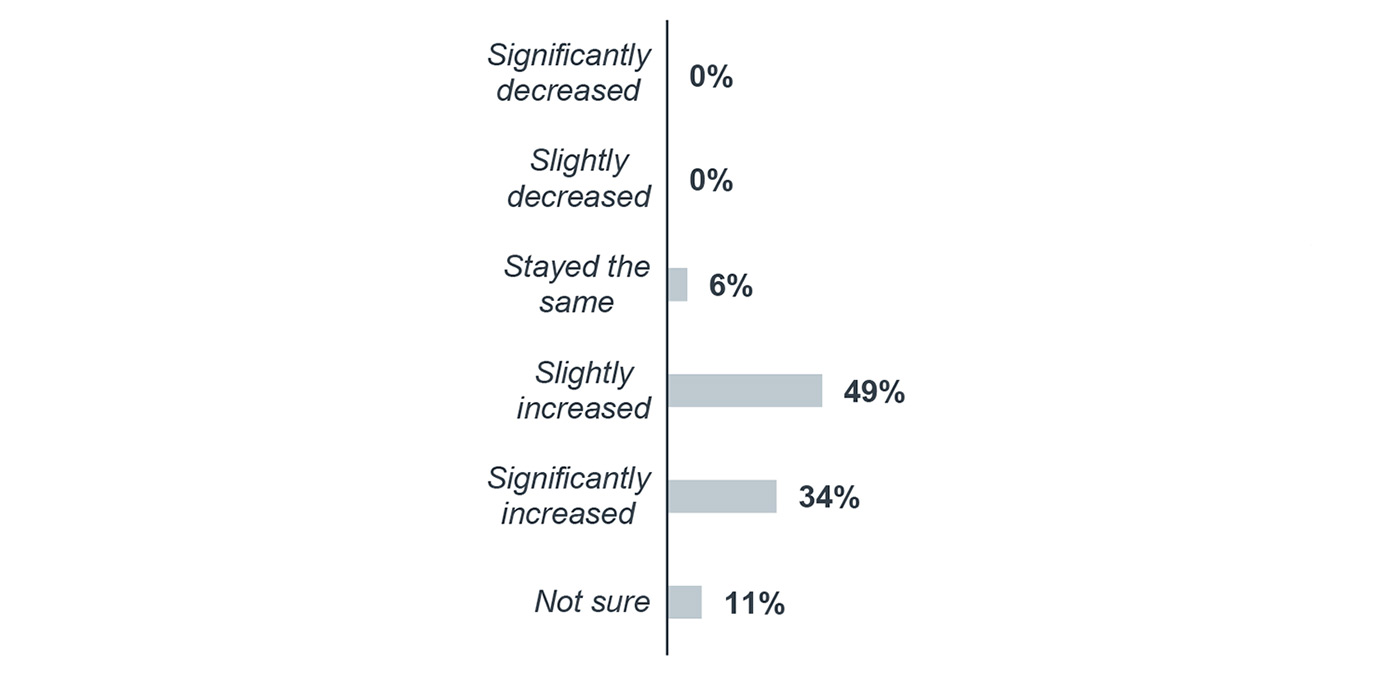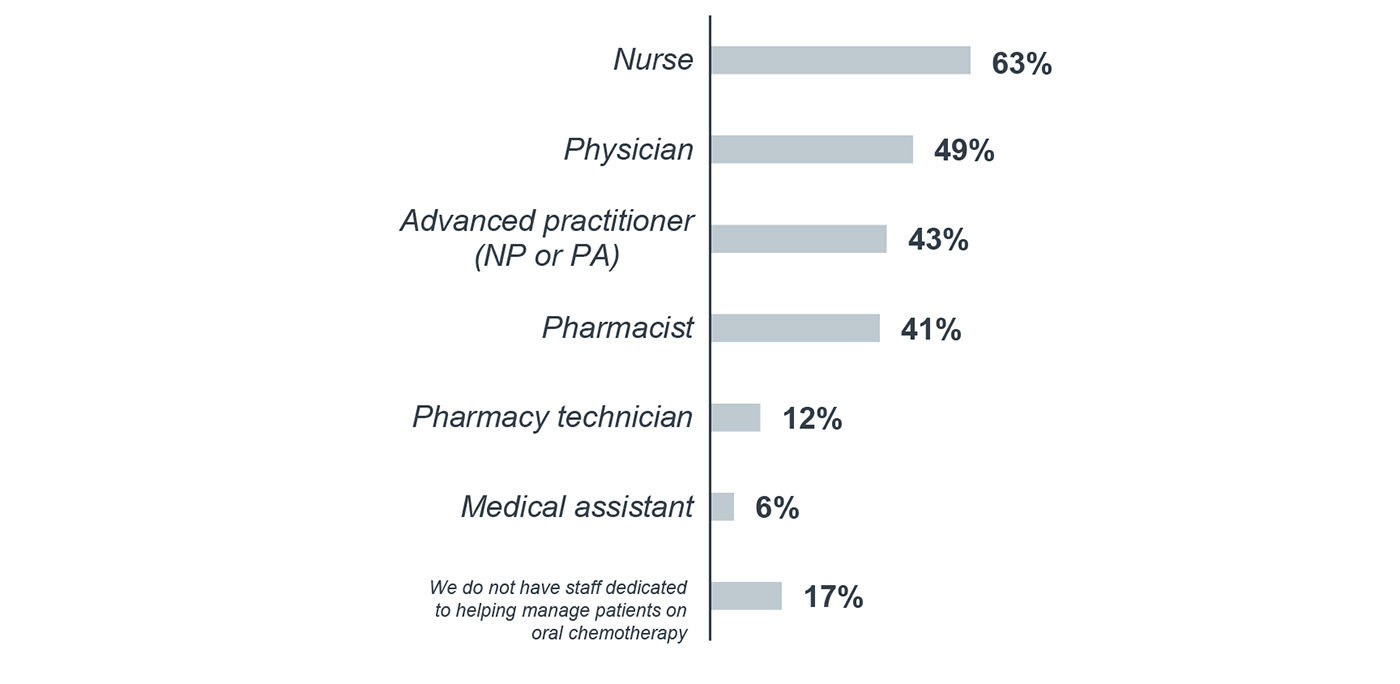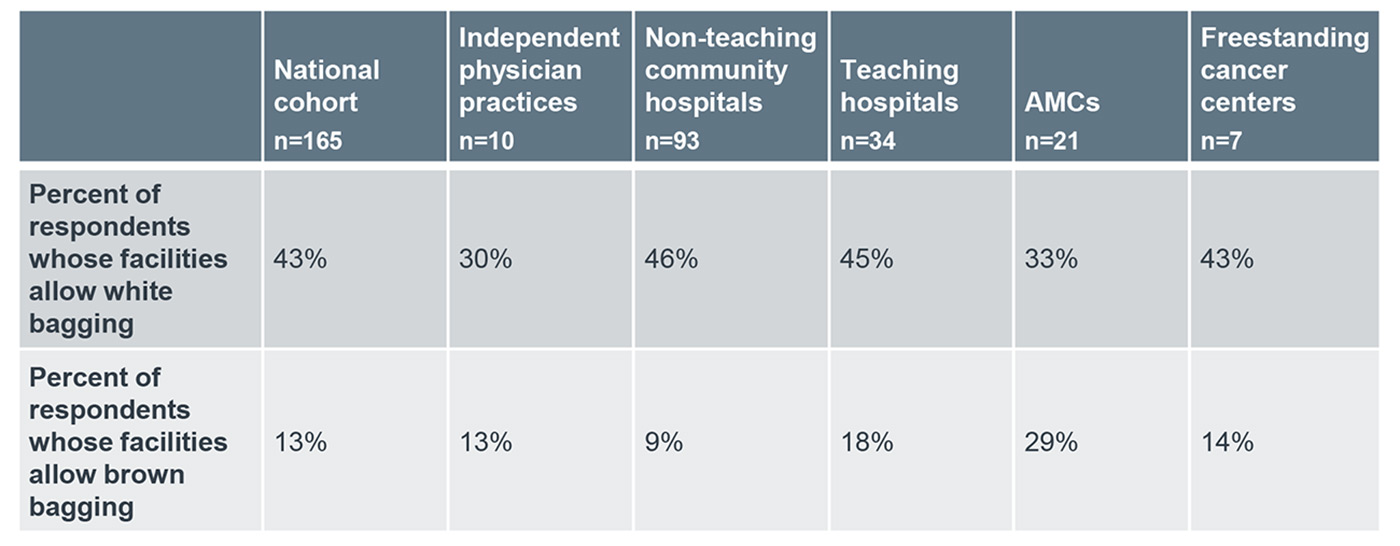We recently partnered with the Association of Community Cancer Centers (ACCC) to survey cancer providers about their priorities, challenges, and top opportunities for growth in the coming year. Keep reading for our takeaways on drug supply and treatment trends.
AMCs much more likely to invest in specialty pharmacy
As specialty drugs proliferate, specialty pharmacies, which distribute these high-cost, specialized drugs, may be a financial opportunity to capture drug revenues that might be otherwise lost due to white or brown bagging. In fact, when asked which investments are most likely to yield a return for cancer centers, 36% of respondents ranked specialty pharmacies as a top investment opportunity—the third-highest ranked response. Digging deeper into the responses, 62% of independent practices and 50% of AMCs indicated specialty pharmacies as a top investment opportunity, compared to only 32% of non-teaching community hospitals.
Specialty pharmacies present health systems with myriad challenges, from securing contracts with health plans to gaining access to limited distribution drugs, and require a significant upfront resource investment. Because of this, specialty pharmacies are still not commonplace—only a quarter of respondents had them, with another 20% planning to add one in the next year. Academic medical centers were the most likely to have a specialty pharmacy, while teaching hospitals represented the largest group planning to add a specialty pharmacy in the next twelve months.
Does your facility own a specialty pharmacy (i.e., pharmacy that dispenses high-cost specialty drugs)?
Percentage of respondents, 2017
n=176 total respondents; n=10 independent physician practices; n=95 non-teaching hospitals; n=35 teaching hospitals; n=26 AMCs; n=8 freestanding cancer centers

All respondents with specialty pharmacies reported they saw benefits, including improving patient access to medication (91%), generating revenue for the organization (88%), enhancing patient education (81%), and having in-house insurance authorization (44%).
Nearly every program treating an increased number of patients on oral therapies
Although oral chemotherapies tend to be given in addition to infused chemotherapies, they play an increasing role in cancer treatment and may disrupt traditional infusion center patterns.
The majority of respondents (89%) noted some increase in the percentage of patients receiving oral cancer therapies as part of their active cancer treatment over the past year—in fact, not a single respondent noted a decrease in the number of patients receiving oral cancer therapies. 34% of respondents noted a significant increase, while 6% of respondents felt this percentage stayed the same. This increased use of oral chemotherapies was most pronounced for independent physician practices, of which 90% noted some increase in the number of patients on oral cancer treatments, and freestanding cancer centers, with 71% reporting a significant increase.
How has the percentage of patients receiving oral cancer therapies as part of their active cancer treatment changed over the past 12 months?
Percentage of respondents, 2017
n=175

The majority of respondents (83%) have staff dedicated to helping manage patients on oral cancer therapies. While this responsibility is often shared across multiple clinicians, most respondents rely on nurses (63%), physicians (49%), and advanced practitioners (43%) to manage this growing population.
Which type of staff members are dedicated to helping manage patients on oral cancer therapies?
Percentage of respondents, 2017
n=174

White bagging significantly more common than brown bagging
We also asked respondents for their policies on white and brown bagging. White bagging refers to the practice of having drugs shipped to an infusion center from an outside specialty pharmacy, while brown bagging refers to the shipment of drugs directly to a patient from an outside pharmacy to be administered at an infusion center. 43% of respondents allow white bagging, but only 13% of respondents allow brown bagging.
Non-teaching community hospitals were the most likely to allow white bagging (46%) but the least likely to allow brown bagging (9%). AMCs were the most likely to allow brown bagging (29%), but one of the least likely to allow white bagging (33%).
Does your facility allow white bagging or brown bagging?
Percentage of respondents, 2017

Don't miss out on the latest Advisory Board insights
Create your free account to access 2 resources each month, including the latest research and webinars.
Want access without creating an account?
You have 2 free members-only resources remaining this month remaining this month.
1 free members-only resources remaining this month
1 free members-only resources remaining this month
You've reached your limit of free monthly insights
Become a member to access all of Advisory Board's resources, events, and experts
Never miss out on the latest innovative health care content tailored to you.
Benefits include:
You've reached your limit of free monthly insights

